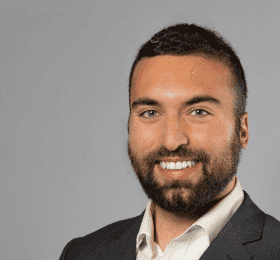Grief is an inevitable part of the human experience. When we develop close and meaningful relationships with people, we also accept the possibility of their loss. And feeling the pain of that loss isn’t a fault, but rather a reflection of the love that we have for them.
However, there are cases when the pain of grief becomes so intense and debilitating that it interferes with our lives. This concept of ‘maladaptive grief’ has recently gained acceptance by clinical psychology, leading to a new diagnostic category called Prolonged Grief Disorder (PGD).
In this article, we’ll explore the history of PGD, its symptoms, and how it presents differently than typical grief and other mental health diagnoses. Finally, we will delve into the clinical treatments for PGD, enabling us to recognize and address it effectively with our clients.
The standard portrait of grief
Before we can explore PGD as a diagnostic category, we’ll need to understand how grief is understood in a non-pathological context.
The first clinical descriptions of grief focused on its outward manifestations. During the 1940s, a picture of the normal grief response was beginning to develop, which can be summarized as follows:
- Preoccupation with the deceased
- Guilt
- Hostile reactions
- Disruption in regular behaviors
- Somatic distress
From there, further conceptual developments about grief were influenced by attachment theory, which claims that grief is a physical and emotional response to the loss of an attachment figure. John Bowlby, the originator of attachment theory, proposed four stages that characterize the normal reaction to loss:
- Shock-numbness
- Yearning and searching
- Disorganization and despair
- Reorganization
Decades later, a researcher named Elisabeth Kubler-Ross would build off this conceptual framework and propose her famous five stages of grief: denial and dissociation, anger, bargaining, depression, and acceptance.
Although it was observed that these stages peaked in a sequential fashion, clients could move dynamically between them. Nonetheless, there was a clear ‘directionality’ to the grief, and although it left people forever changed, there was a sense that the grief could be effectively worked through and resolved.
Pathological grief: Prolonged Grief Disorder
In the 1990s, psychologists started to recognize that some presentations of grief differed greatly from its typical clinical picture. One strong piece of evidence for this distinct category of grief was that it was generally unresponsive to both psychotherapy and antidepressant medications.
In the next couple of decades, landmark studies were published that provided evidence for pathological grief as its own diagnostic category. One of these, conducted in 1997 by a researcher who had specialized in the study of trauma, proposed an algorithm for diagnosing ‘complicated grief disorder’. Another, the 2009 Yale Bereavement Study, used statistical analysis to produce specific symptom criteria for pathological grief.
Based on these accumulating lines of evidence and advocacy by researchers, pathological grief was officially incorporated into the DSM-5-TR as ‘Prolonged Grief Disorder’ in 2022.
There are three major criteria for PGD:
- A death in at least the past 12 months (6 months for children) of somebody close to the client
- A grief response occurring nearly every day over the past month, consisting of yearning and/or preoccupation with the deceased
- Three or more of the following symptoms occurring nearly every day over the past month:
- Identity disruption
- Disbelief
- Avoidance
- Emotional pain
- Difficulty reintegrating
- Numbness
- Meaninglessness
- Loneliness
Aside from these, the symptoms must also cause clinically significant distress, exceed the client’s social, cultural, or religious norms, and not be better explained by another mental health diagnosis or substance use.
The prevalence of PGD was estimated by a 2017 meta-analysis that reviewed a total of more than 8,000 bereaved individuals across 14 studies. It found that 9.8% of bereaved individuals met the criteria for the disorder, suggesting that about 1 in 10 people are at risk of developing PGD after experiencing a significant loss.
When we review the constellation of symptoms implied by PGD, we can see how they differ from typical grief responses in two separate ways: its duration and its dysfunctional effects.
Duration
We know that grief has no set time-frame, and that everybody grieves at their own pace. However, the grief associated with PGD is characterized by persistent distress and disruption that continues for at least 12 months after the loss for adults or 6 months after the loss for children. In a typical reaction to loss, although the pain of the loss may still be very much present for the bereaved after this much time has passed, one would experience marked gains in mood and ability to function over time.
Dysfunction
The dysfunctional aspects of PGD are reflected in the symptoms of identity disruption, avoidance, and difficulty reintegrating. With identity disruption, the person struggles to form a coherent identity once a person who was previously a central part of that identity is lost. With avoidance, a person avoids situations that serve as reminders to the deceased. With difficulty reintegrating, the person is no longer able to engage in activities or relationships. These are all contrasted with a typical grief response, during which a person is able to experience the loss without any major disruptions to their self-identity, and is able to return to their usual roles and activities over time.
Differential diagnoses
We’ve read about the criteria for PGD, and how it differs from typical presentations of grief. Now, let’s read about how PGD can be distinguished from two closely related diagnoses: Major Depressive Disorder and Post-Traumatic Stress Disorder.
Major Depressive Disorder
The similarities of MDD and PGD are reflected in the fact that PGD was originally proposed to be included in the depressive symptom section. It is clear that depression and pathological grief share many symptoms including low mood and lack of interest in activities.
However, MDD and PGD are distinguished by the fact that the sadness and withdrawal of depression tends to be more generalized, whereas these symptoms in PGD center specifically around the deceased person.
Post-Traumatic Stress Disorder
PGD is currently included in the Trauma and Stressor-Related Disorders section of the DSM-5-TR, which reflects how closely related it is to PTSD. PGD shares symptoms with PTSD such as intrusive thoughts and avoidance.
However, PGD differs from PTSD in important ways. First, in PGD, the intrusive thoughts are related more to the deceased person as opposed to the circumstances of the death, which would be more salient in post-traumatic responses. Secondly, whereas the overall effect in PTSD is fear, PGD is characterized by a predominant sense of yearning and sadness.
The reward-pathway theory
In contrast to depressive disorder and trauma disorders, some authors have proposed that PGD represents its own separate diagnostic category related to dysregulation in the brain’s reward systems. This suggests that clients with PGD are stuck in a reward cycle in which thoughts of the deceased provide behavioral reinforcement.
This idea is supported by neuroimaging studies that show that parts of the brain related to reward-seeking behavior are active in clients with PGD. It’s also supported by research that shows that emotional dependence on the deceased is a significant risk factor in the development of PGD.
Treating PGD
As we read earlier, one of the observations that led to the formulation of PGD as a separate diagnostic category was its imperviousness to typical treatments. What, then, are the recommended treatments for it?
A specialized form of Cognitive-Behavioral Therapy known as Complicated Grief Treatment (CGT) has been developed (Shear et al. 2016) which has been shown to be effective. It involves two kinds of elements:
- Loss-focused: Encourages the client to accept the reality of the loss, and changing the relationship with the deceased
- Restoration-focused: Encourages the client to reintegrate with their past activities and create new relationships and sources of meaning
The main goal of CGT is to help the client move through the typical reactions of grief — what has sometimes been called the ‘grief-work’ — and achieve reintegration into their typical activities and the ability for other meaningful relationships.
In addition to that treatment, typical CBT, as well as support groups, have been shown to be helpful for clients who meet the criteria for PGD. Future studies will give more specific guidelines about treatment, addressing how social media affects pathological grief, the role of cultural beliefs and practices, and the role of religious institutions and spirituality.
Conclusion
Prolonged Grief Disorder (PGD) is among the newest diagnoses in the DSM-5-TR. It encapsulates symptoms that develop following a loss that are more intense and dysfunctional than typical symptoms of grief, and are also not attributable to any other mental health disorders.
Although research about the treatment of PGD is still emerging, initial directions involve cognitive methods to address the core thoughts and perspectives that contribute to pathological grief.
By staying informed about this emerging clinical category, we empower ourselves to effectively treat it in our clients, thereby becoming more competent and impactful clinicians.


